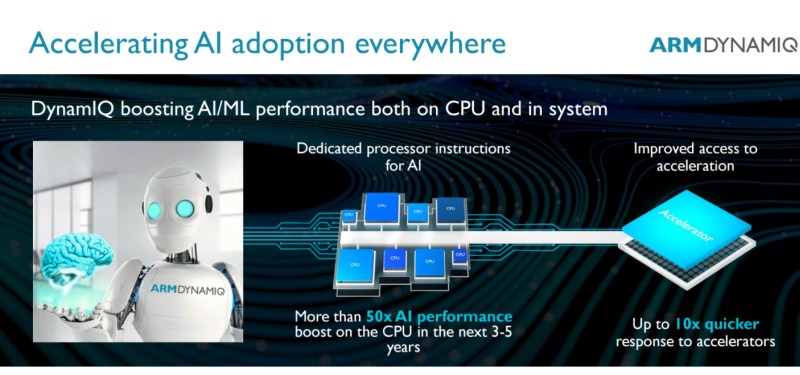
That could make for a 1+3 (quad-core) or 1+7 (octacore) layout, where each individual core has its own performance and power characteristics. The claim it’s making is that this setup can improve responsiveness for AI, with a 50x boost in AI performance over the next 3-5 years, and 10x between the (still Cortex-A9) CPU and specialized “accelerator hardware.” That matters, especially when one of these chips is using machine learning to drive your car, scanning the road ahead for potential hazards.
Of course, it also could be extremely profitable for ARM and the companies that build on its technology (like Qualcomm, NVIDIA, Samsung, Apple and even Intel), as it claims that after shipping over 50 billion ARM-based chips between 2013 and 2017, it projects the world will buy over 100 billion by 2021.




